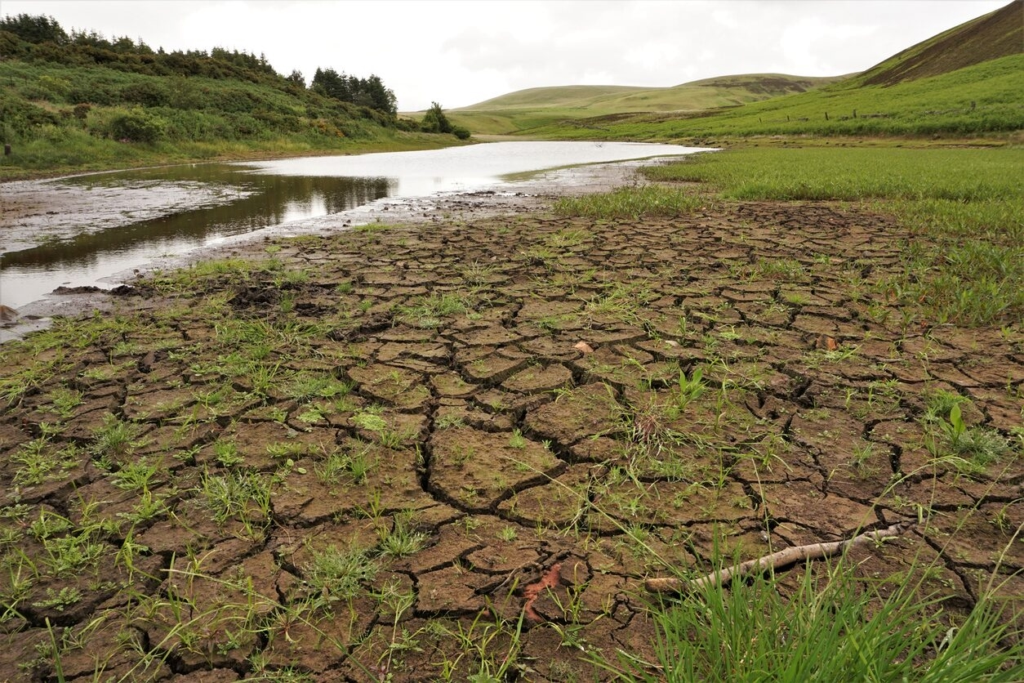Blog
There’s no end to poverty without climate resilience…
BUT climate resilience can only be achieved by ending poverty.

At Verture, we believe there is no adaptation without just adaptation, but what do concepts like transformation, justice and equity mean in practice when combined with adaptation and resilience? And how can the benefits be felt by people on the lowest incomes in Scotland?
Climate change impacts like flooding, over-heating and storm damage are, and will be, felt the most by communities who are already marginalised by society. Existing vulnerabilities, geography and economic and political systems create a perfect storm. Black and brown people, migrants, disabled people, women, people on low incomes, people in poor quality housing, the over 65s, and working-class people are hardest hit.
Transformational adaptation works with concepts like power, change and co-production with communities. It centres justice and equity rather than focusing only on the grey infrastructure projects often associated with adaptation.
If we don’t provide communities with resources, they can’t be resilient to climate impacts. Experts recommend keeping five days’ worth of canned food in your home as a resilience measure. You can’t do that if you’re choosing between heating and eating every day. When a red weather warning is issued, not everyone can work from home – what about the safety of those on zero hours contracts, or those delivering essential frontline services? How do they juggle lost income, emergency childcare and keeping their job? What about those reliant on essential services such as people in receipt of in-home care?
And if communities don’t become climate resilient, repeated climate shocks will only push people back into financial insecurity.
The solutions to climate resilience will help people out of poverty. Steps to end poverty also boost resilience. They are mutually supportive. Aka, everybody wins.

Real co-production for climate adaptation
We know that the people most impacted by climate change are not the ones who created the problem. Adapting towards community climate resilience in each place must be collective and co-produced. It’s time we turned decision making power over to those impacted by financial insecurity and climate change. End Poverty Edinburgh (EPE) is a brilliant example of lived experience in action. EPE is a group of independent citizens aiming to raise awareness of poverty in Edinburgh, influence decision-making, and hold the city to account.
Solutions that come from communities will be embraced and nurtured by communities in the future. As Caroline Cawley from EPE says: “Pretty things put onto people get torn down in minutes. Pretty things built with the community last.”
This is an essential reminder for climate resilience initiatives.
So what could co-produced action look like? Key areas for transformation:
- More access to green space
- Better public transport
- Community growing and food networks
- Improved housing and retrofit
- Healthcare resilience

Where can we see this taking shape?
Edible Estates’s recent project ‘Community Climate Action Planning in Council Estates’ was co-led by paid community researchers across four of Edinburgh’s estates. They used Adaptation Scotland’s Community Climate Adaptation Routemap, developed by Verture, along with other Adaptation Scotland tools, to underpin the work, while putting residents in the lead. The result? Co-produced climate adaptation action plans for each of the areas, in the unique style of the communities themselves.
A similar approach is taken through our Creative Climate Futures work. Through the pioneer neighbourhoods of The Gorbals and Easterhouse in Glasgow, we have worked with embedded artists and communities to co-design approaches to climate action. Residents didn’t identify with terms like adaptation, and climate change wasn’t as front of mind as issues like cost of living, so we’ve been engaging through events like Make Do’s which meet people where they are and address immediate needs at the same time as climate challenges.
At a regional level, Climate Ready South East Scotland (CRSES) is a collaborative partnership led by Verture, funded by Scottish Government and Shared Prosperity funding. CRSES created the first regional climate risk and opportunity assessment for the Edinburgh and south east Scotland city region. The assessment included multiple sources of data, including a public story map where communities could share their experiences and ideas for adaptation. Stories were collected at engagement events with communities in their place, led by the region’s Climate Hubs. The next stage of the project will develop the priority adaptation actions that work for people and planet, and line up social, infrastructure and built environment resilience projects to be delivered by 2030.
What’s next?
To understand more about this topic, you could check out Transformative Adaptation by Rupert Read and Morgan Phillips.
Through being involved in policy initiatives like Everyone’s Environment and engaging with the Edinburgh Poverty Commission, we have explored the need to tackle financial insecurity in tandem with climate impacts. There’s more to do to join up the social and environmental sectors.
The time to act is now – who’s with us?
